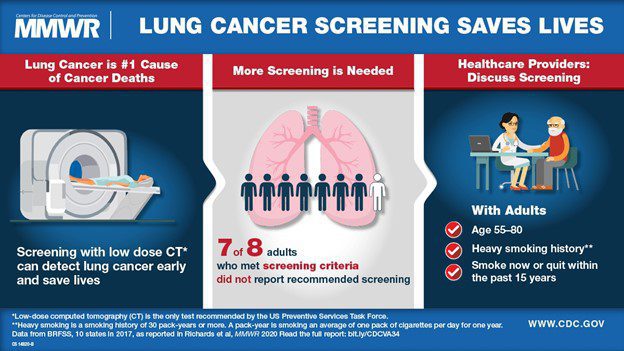Dana-Farber Cancer Institute and the Florez Laboratory Set to Launch Innovative Pregnancy and Lung Cancer Registry
“Lung cancer is the leading cause of cancer-related death for women in the United States, and the rates of lung cancer in young women under the age of 50 are increasing. Together with increasing maternal age at the time of first pregnancy, the likelihood of lung cancer during pregnancy has grown. Although case studies of lung cancer during pregnancy exist, much of the data on cancer treatment during pregnancy is extrapolated from breast cancer and may not apply to the unique needs of patients with lung cancer. More so, much of this data focuses on treatment with chemotherapy, and there is less data on the safety of immunotherapy during pregnancy. Additionally, young patients with lung cancer are more likely to have targetable oncogenic drivers where targeted therapy is the best treatment option. With scarce data on the safety of targeted therapies during pregnancy, providers are often left in the dark about what the best treatment option is. Data on the treatments and subsequent maternal and fetal outcomes of patients with lung cancer during pregnancy is vital to evidence-based decision-making for oncologists, and a lack of standardized clinical recommendations for these patients is a gap that needs to be filled.”
I thought I pulled a muscle but I actually had stage 4 lung cancer aged 37 despite never smoking – here are the signs you MUSN’T ignore
A Texas woman was diagnosed with stage 4 lung cancer at just 37 years old, despite never smoking. Tiffany Job, a nurse and mother of eight-year-old twin boys, assumed that the pain in her right rib that began in March 2020 was a pulled muscle resulting from a workout. However, scans would later reveal tumors in her lungs that had spread to her neck, and bones.”
High levels of cancer-causing radon gas detected in 16.9% of Alaska homes
“Juneau, Alaska (KINY) – Radon is the second leading cause of lung cancer, and the “State of Lung Cancer” report reveals that it is detected at high levels in about 16.9% of homes in Alaska. During January for National Radon Action Month, the American Lung Association in Alaska is urging everyone to help save lives by testing their home for radon and mitigating if high levels are detected.”
It’s Best to ‘Be a Pest’ When Self-Advocating
““Be a pest. Do it.” Those words from a friend are written on a piece of paper that I keep rediscovering in my mess of a home office. The advice was intended for job hunting, but I’ve found that it applies to self-advocacy for medical care as well. For example, while in treatment the first time, I ran across a series of charges that didn’t make sense. When I called my insurance company and challenged this, they found that the cancer center was electronically sending charges in a batch that started transmitting before midnight and finished after midnight. The result was that my activity appeared on two different dates, triggering the system to incorrectly bill me as though I had seen the doctor on both days. So, with one phone call, a pleasant attitude and a bit of patience, the financial burden of cancer treatment was lowered since the insurance customer service person removed the extra charges while I was on the phone.”
EGFR Inhibitors for Lung Cancer Tied to Increased Keratitis Risk
“— Findings don’t tell us to stop these drugs, researcher says, but should guide clinical decisions”
Proposed Bevacizumab Biosimilar Demonstrates Clinical Equivalence to Avastin in NSCLC
“The proposed bevacizumab biosimilar BAT1706 (Bio-Thera Solutions) demonstrated equivalence to the reference product (Avastin) in a phase 3 comparative efficacy trial in patients with advanced nonsquamous non‐small cell lung cancer (NSCLC).”
European Commission Approves Adagrasib in KRAS G12C-Mutated NSCLC
“The European Commission has granted conditional marketing authorization to adagrasib (Krazati) for adult patients with KRAS G12C–mutated non–small cell lung cancer, according to a press release from Mirati. Results from the phase 2 KRYSTAL-1 trial (NCT03785249), which analyzed adagrasib at 600 mg orally twice daily, led to the agent’s approval. Patients were eligible if they had previously received treatment with a platinum-based regimen and an immune checkpoint inhibitor.”
High-dose radiotherapy with chemotherapy found to be effective in treating people with non-small cell lung cancer
“A new study led by researchers from the UCLA Health Jonsson Comprehensive Cancer Center shows that using high doses of radiation while integrating an ablative radiotherapy technique called stereotactic ablative radiotherapy (SABR) concurrently with chemotherapy is safe and effective in treating people with locally advanced non-small cell lung cancer that is not suitable for surgery.”
 Lung Cancer Screening: A Closer Look at the Risks and Challenges
Lung Cancer Screening: A Closer Look at the Risks and Challenges
“A recent study published in the Annals of Internal Medicine has shed light on the complications and risks associated with lung cancer screening. The study revealed that 31.9% of patients underwent downstream imaging and 2.8% underwent invasive procedures, with a high rate of complications during these invasive procedures. The study, led by Katharine A. Rendle, PhD, MSW, MPH, of the Perelman School of Medicine at the University of Pennsylvania, utilized a retrospective analysis using procedural coding.”
Video:
‘No Feelings of Claustrophobia’ – Famous TV Star Battling Stage 4 Lung Cancer Says Hyperbaric Oxygen Chamber Helps
“Hyperbaric oxygen therapy is used for treating underlying hypoxia” and helps with some infections. However, this treatment option remains inconclusive for actually helping cancer patients, according to several studies on its impact. The Food and Drug Administration stressed this treatment option does not “cure cancer, Lyme disease, autism or Alzheimer’s disease.””
Is there radon in your home? What to know about the odorless gas that can lead to lung cancer
